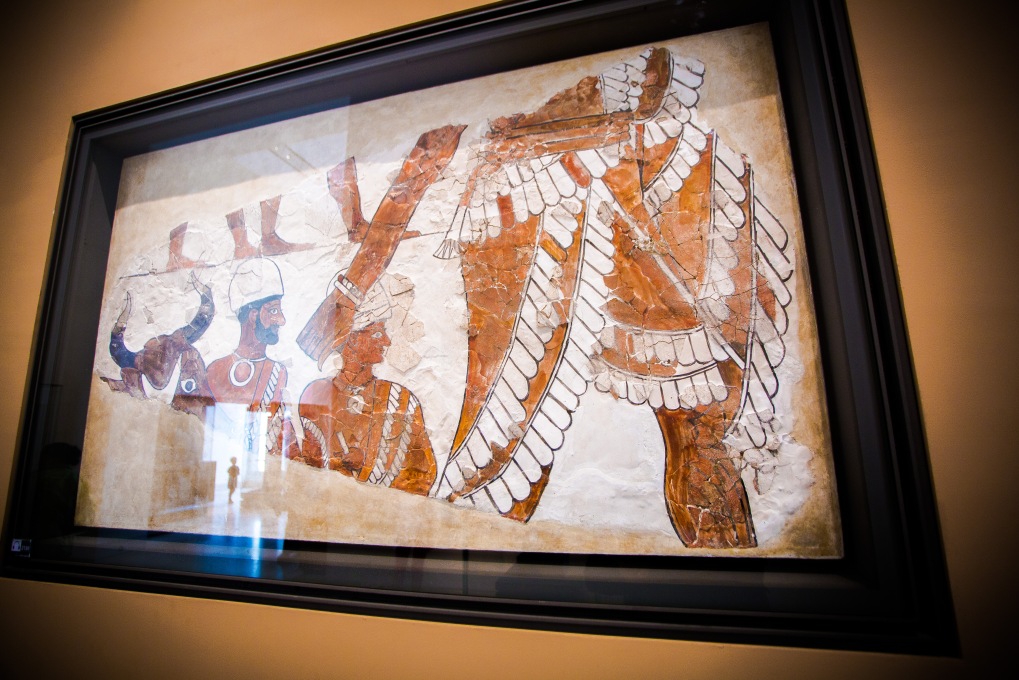Excavated from the Royal Palace of Mari in what is now Eastern Syria. Ebih-il, the superintendent of Mari, would not have been familiar with the palace because he lived about 600 years before it was built.
The painting is a fragment from a larger mural painted on white plaster. The scene depicts a sacrificial procession. We know the figure on the right is the king because of his exaggerated size relative to the others and because he is the obvious leader. This most prominent of kings is followed by the sacrificer, with baton in hand, and a bearded assistant who leads the bull, adorned for imminent sacrifice.
When I took this photo, which hangs not far from the Code of Hammurabi in the Department of Near Eastern Antiquities in the Louvre, I was struck by the deep red colors in the skin of the men, the intricate detail of the king’s skirt with its fringe and layers, and the depiction of action, of a moving forward, even though this is a mere fragment of a much larger mural and few figures are seen. It is impressive enough for me to see it hanging on a wall in the Louvre. How much more amazing it would have been to view the entire painting in the Royal Palace of Mari! I can just imagine it…
Within this painting, unbeknownst to me until I began editing the image (trying mightily to reduce the glare from the glass), I discovered another participant in the procession. He may not be readily apparent, but if you look toward the lower left corner, you will see the silhouette of a little boy framed perfectly in a back-lit doorway. He has become an unwitting member of the processional party; the procession of a great king and his men and a sacrificial bull, in a painting on a wall in a royal palace built nearly 4000 years ago. It is a wonderful portrayal of the convergence of the very old (the very, very old) with the young; the ancient with the modern; a silhouette – a glimmer of what is still to come – and the colorful, detailed remembrance of what has been.
References:
http://en.wikipedia.org/wiki/Royal_Palace_of_Mari
Mattmann, P. (2012). Visit the Louvre With the Bible. Near Eastern Antiquities

